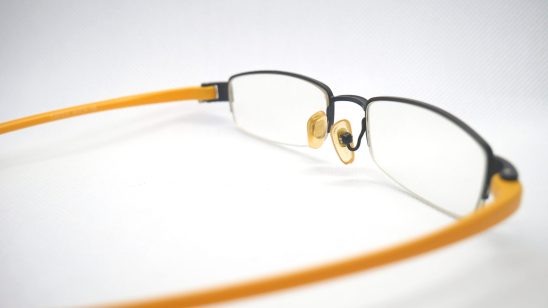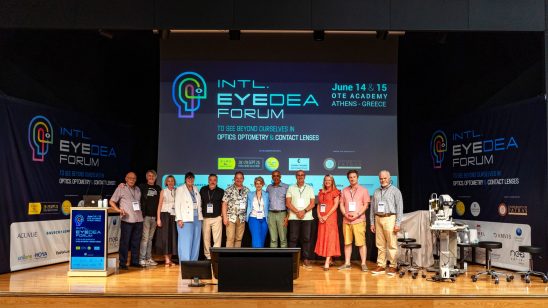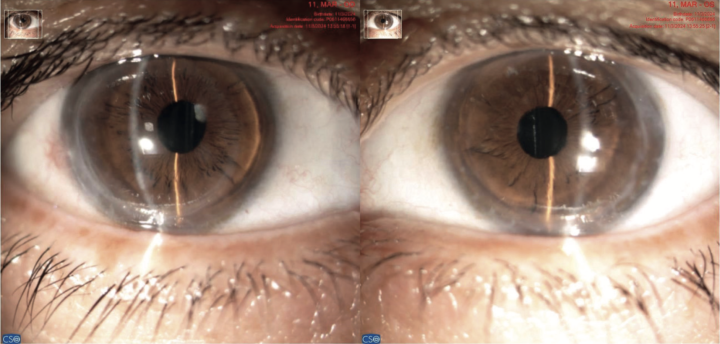
THE USE OF OPHTHALMIC LENSES IN CASES OF IRREGULAR ASTIGMATISMS, KERATOCONUS, TRANSPLANTS , AND POST SURGERY
Written by Vassilis Foteinakis, Msc.,Contact Lens Practitioner – Optometrist, Optical Papadiamandopoulos Sa Athens-Greece
One of the things that we used to learn during our undergraduate studies at the Optometry School, and is still being heard from Ophthalmologists and other Optometrists , is that in cases of irregular corneal astigmatism (eg keratoconus), there is little or no use for spectacles and ophthalmic lenses as it is impossible to offer good visual acuity to the patients. However, in our everyday clinical practice, and with the help of new surgery techniques like the Corneal cross linking, this old theory is somewhat turning to a myth. In any case, we should not forget that all irregular astigmatisms are not the same and they do not bear the same asymmetry. Thus, in practice, we have found out that in a good number of cases with keratoconus , or post refractive surgery failed patients, we can offer spectacles that can yield absolutely functional acuities, tailored to the patients’ needs. But what is actually a functional visual acuity ? What level of acuity does one need in order to function at one’s home , ork with a laptop or a desktop computer that lies 50-100 cm away from you and has a rather bright screen with very good contrast? Or watch TV with a TV set of 50 inches , 2,5 metres away from you ? In these cases, a Visual Acuity of 6/9 or even less , can be absolutely enough for the patients to perform these tasks. Thus , if we can provide our irregular astigmatism patients with a pair of spectacles that prove to be quite practical and functional, they can become less dependent on their contact lenses, wear them for less hours and avoid any complications from overwearing their lenses, or even falling to sleep with them due to and of day fatigue. And in some cases, patients can choose to opt just for spectacles if the vision is very satisfactory , and no contacts at all. In the next paragraphs we will present three cases where a pair of spectacles proved to be a very good alternative to contact lenses. The first case is a young keratoconic patient, the second a rather elderly woman with a great amount of corneal astigmatism due to corneal transplants by the mighty and notorious Dr Fiodorov and his team from the Soviet Union years, while the third case is a middle aged business executive with a transplant on his right eye and a keratoconus on the left .
CASE 1. Young male, 23 years old with keratoconus , post CXL in both eyes. In the photos below the topographies and pachymetries of the two eyes are presented. With a thorough and detailed refraction we ended up with the following ophthalmic prescription for spectacles:
RE: +0,75 DS /-2,50 DC X 30 LE: -1,00 DS /-5,00 DC X 145
The final binocular Visual acuity was approximately 6/9, whicj proved to be highly practical and functional for his everyday needs. However, as a rather Visual acuity was desired for his new job as a courier , we also fitted him with scleral contact lenses acquiring a visual acuity of 6/9+ . Scleral lenses have the characteristic not to touch or mold the cornea , thus affecting refraction after removing the contact lenses. In this way, our patient, spends his working hours wearing the scleral contact lenses and takes them out and put his spectacles on when he returns back home. His younger brother, also sugffering from keratoconus, but being afraid of wearing contacts, opted for a new pair of spectacles of about the same visual performance as his brother and is doing quite fine for now with his studies and other activities.
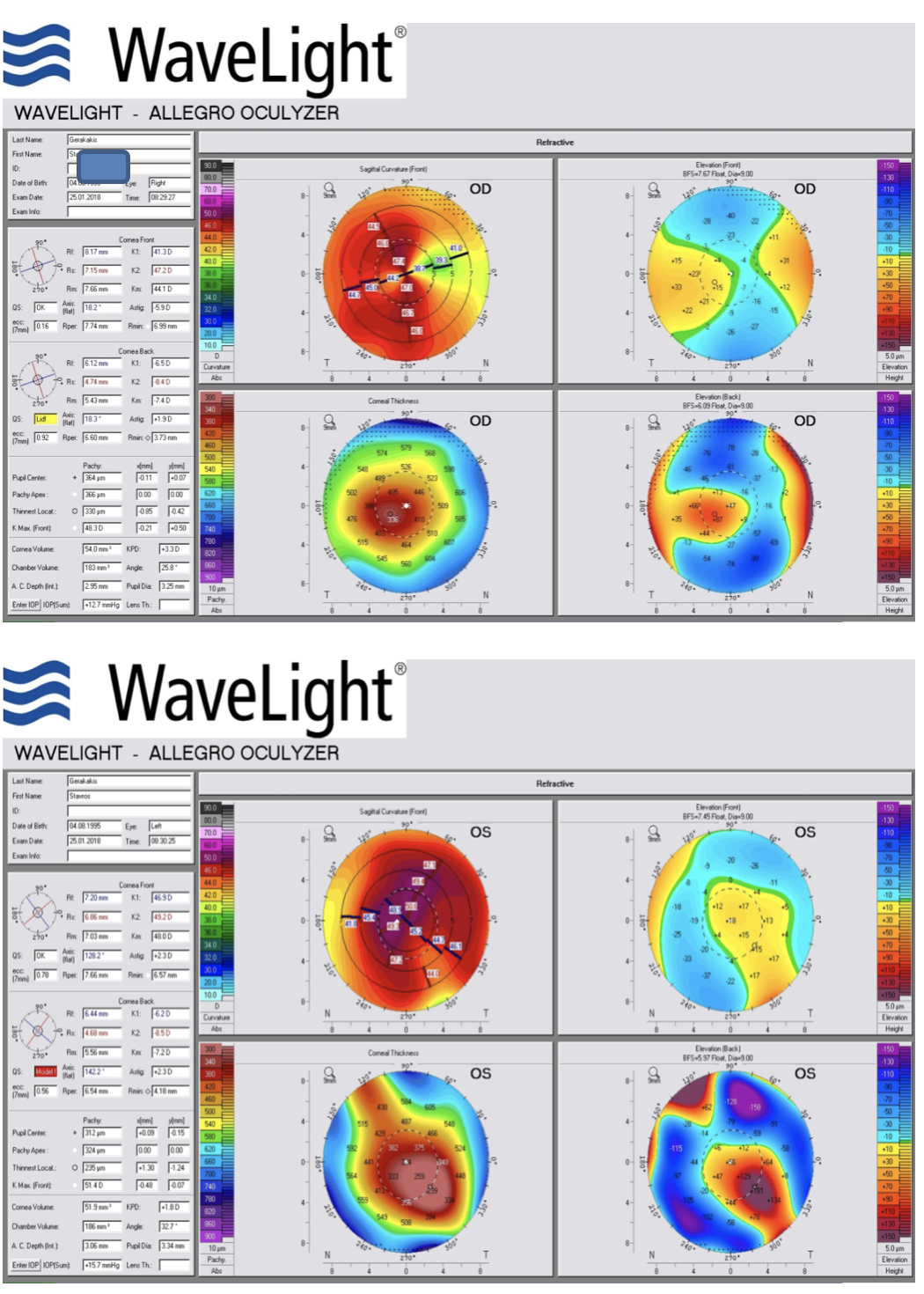
CASE 2 . A female of 60+ years, with very large diameter corneal transplants , operated by the famous Dr Fiodorov and his team in the Soviet Union. Corneal astigmatisms measure up to 12-15 cylindrical diopters. Central coneal thickness is 575 microns on the Right Eye and 625 on the Left. She has been wearing RGP lenses for decades and wanted to check whether she could get a pair of spectacles that could offer her enough vision top get around at home or even better, given the fact that she had retired from work recently. We managed a refraction that yielded the following ophthalmic prescription : RE +4,75DS/-10,00DS X 148, LE: +4,00DS/ -10,00 DC X 140 with a Binocular Visual Acuity score of 6/9 . With a +3,25 ADD she could read perfectly N6 print. The near vision spectacles were prescribed with a decreased (-9,00 DC) cylinder power, as more cylinder power was not needed for the near reading task, mainly due to pupil constriction and the acuity weight of the near task. We also fitted her with RGP contact lenses for the few times that she would like to go out and watch a movie or visit friends . It is important to note that she was not a driver. Her new RGPs offered a visual acuity of 6/7,5 and better with a mere +1,75 ADD for reading. Thus, the particular patient spent most of the hours and days wearing spectacles and in some cases her RGP contact lenses. One can admire at the pictures below the transplants and their corneal cylindrical majesty !

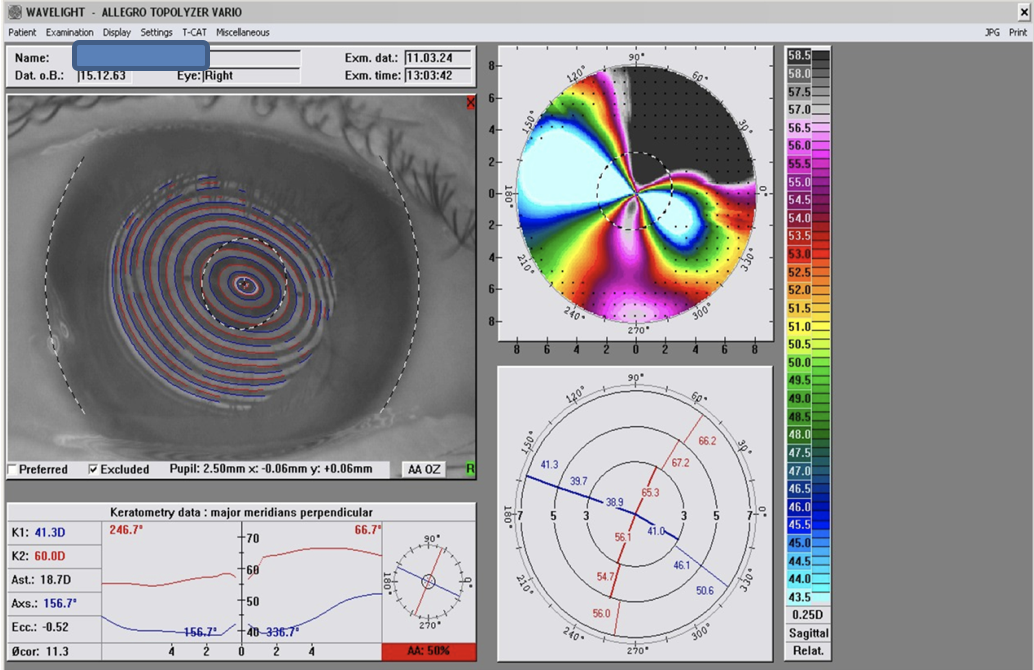
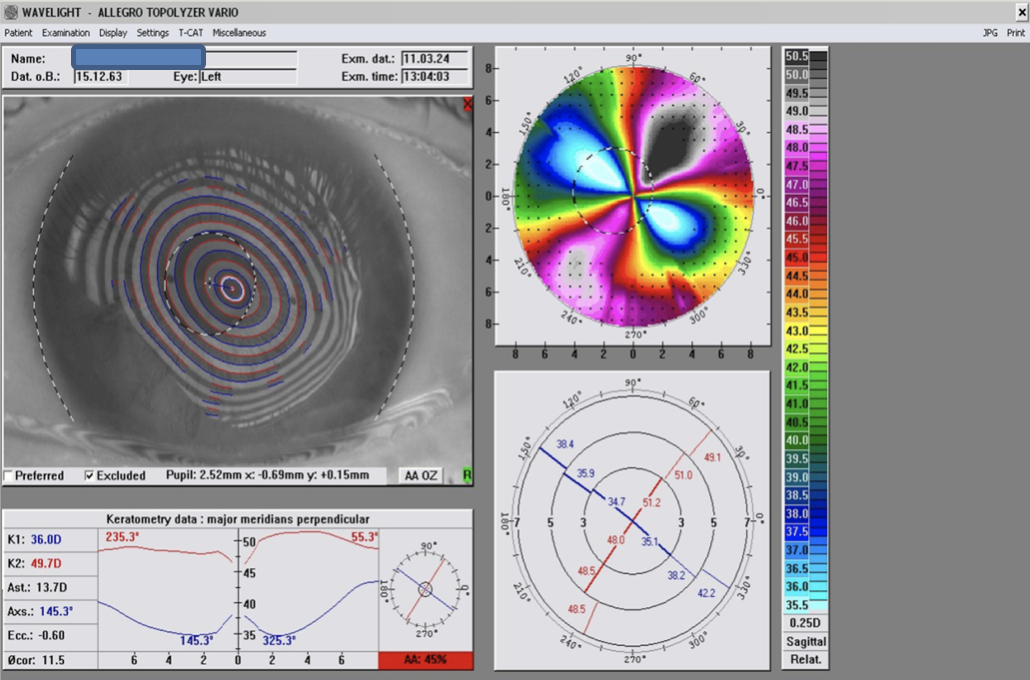
CASE 3. Male , 47 years old, with a corneal transplant , due to advanced keratoconus, in his Right eye and a rather milder keratoconus on his left eye. He has been using RGPs in both eyes for 25+ years now with very good comfort and visual acuity (6/6). However, lately she has been suffering from mild visual fatigue and discomfort mainly due to the beginning of presbyopia and a good number of hours in front of a laptop or desktop screen. As a part of the usual ophthalmic examination we did a spectacle refraction right after removing his contacts, that yielded a 6/7,5+ visual acuity with no ADD power for near. Thus, we discussed about a pair of spectacles that would give him the opportunity to wear his RGPs a bit less, and that would give him excellent vision at near, as he used to do some work at night mainly with a desktop PC. One should mention that the RGPs touch and mold the cornea and alter the ophthalmic prescription in a beneficial way (usually less myopia and astigmatism) and this effect usually lasts for at least a few hours. The final prescription that we used was RE : -1,50 DS/ -5,50 DC X 90 , LE: -3,00 DS/ -3,50 DC X 140 with a final binocular visual acuity of 6/7,5+1 and N6-N8 at near. The spectacles proved to be a huge success according to the patient who uses them when he returns home after work during the weekdays and for the main part of the weekend. In that way, he came to use his contacts less hours than usual and he feels much more relaxed and healthy. He recently ordered a second pair to have it as a back up at his holiday home. The picture below present the topographic data of his two eyes.
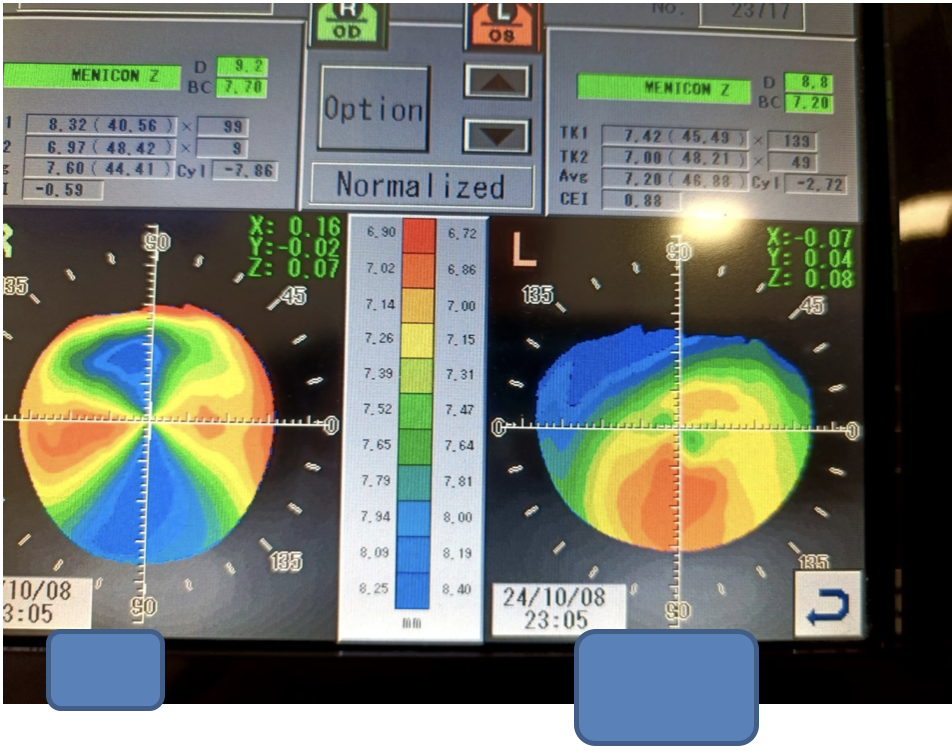
Concluding, one can understand that in many cases of patients with keratoconus, corneal transplants, post refractive ectasias ans more, we can achieve spectacle prescriptions that can perform in a very adequate way, giving a good visual alternative to the patients and offering them the possibility to wear their contacts for a reasonable number of hours and not overwearing them. This can also prove useful in cases of illness, staying in a hospital, etc grabbing a pair when/if an earthquake strikes and so on. I believe that with such good refractions and pairs of spectacles we can have healthier and happier contact lens patients!



